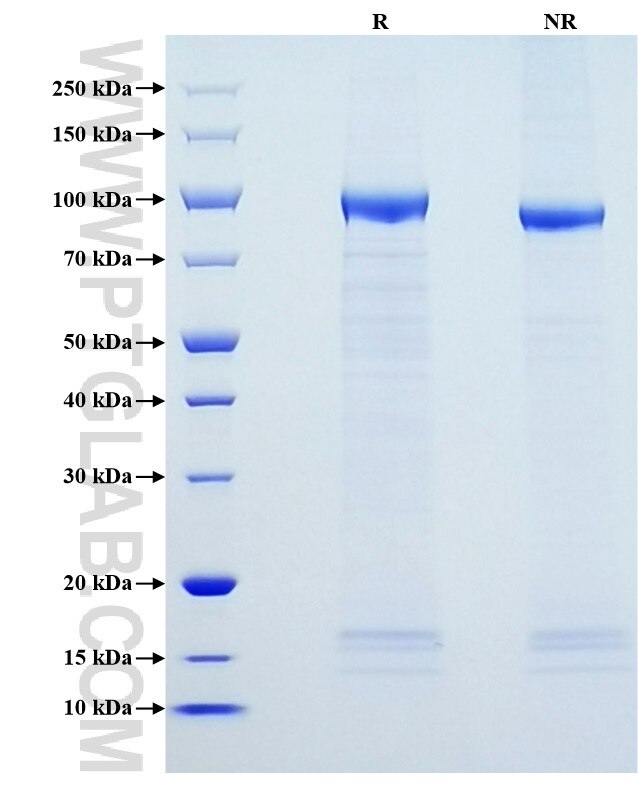Recombinant Human MPO protein (His Tag)
Species
Human
Purity
>90 %, SDS-PAGE
Tag
His Tag
Activity
not tested
Cat no : Eg0511
Validation Data Gallery
Product Information
| Purity | >90 %, SDS-PAGE |
| Endotoxin | <0.1 EU/μg protein, LAL method |
| Activity |
Not tested |
| Expression | HEK293-derived Human MPO protein Ala49-Ser745 (Accession# P05164-1) with a His tag at the C-terminus. |
| GeneID | 4353 |
| Accession | P05164-1 |
| PredictedSize | 82.7 kDa |
| SDS-PAGE | 90-110 kDa, reducing (R) conditions |
| Formulation | Lyophilized from 0.22 μm filtered solution in PBS, pH 7.4. Normally 5% trehalose and 5% mannitol are added as protectants before lyophilization. |
| Reconstitution | Briefly centrifuge the tube before opening. Reconstitute at 0.1-0.5 mg/mL in sterile water. |
| Storage Conditions |
It is recommended that the protein be aliquoted for optimal storage. Avoid repeated freeze-thaw cycles.
|
| Shipping | The product is shipped at ambient temperature. Upon receipt, store it immediately at the recommended temperature. |
Background
MPO(myeloperoxidase) is a peroxidase enzyme presented in the azurophilic granules of polymorphonuclear (PMN) leukocytes and monocytes. Plasma concentration of MPO can be used as a specific marker of PMN activation. MPO catalyzes the production of hypochlorous acid (HClO) from hydrogen peroxide (H2O2) and chloride anion (Cl-, or the equivalent from a non-chlorine halide). This enzymatic system plays an important role in human defense against microorganisms. The serum/plasma MPO levels have been associated with a variety of clinical conditions including inflammatory diseases, atherosclerosis, ischaemic stroke, hypertension, heart failure, risk of cardiovascular events and so on.
References:
1. Bainton & D., F. et al. (1971) Journal of Experimental Medicine. 134(4), 907-934. 2. Seymour J. et al. (1970) Science. 169(3950), 1095-1097. 3. Heinecke JW. et al. (1997) Curr Opinion Lip. 8:268-274. 4. Hazen SL. et al. (1997) J Clin Invest. 99: 2075-2081. 5. Re G, A. et al. (1997) Eur J Emerg Med. 4: 5-9. 6. MacMahon S. et al. (1990) Lancet. 335: 765-774. 7. Deuschl F G. et al. (2014) The Journal of Heart and Lung Transplantation. 33(4):S164. 8. Hoy A. et al. (2001) European Journal of Human Genetics Ejhg. 9(10):780-786.

